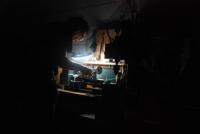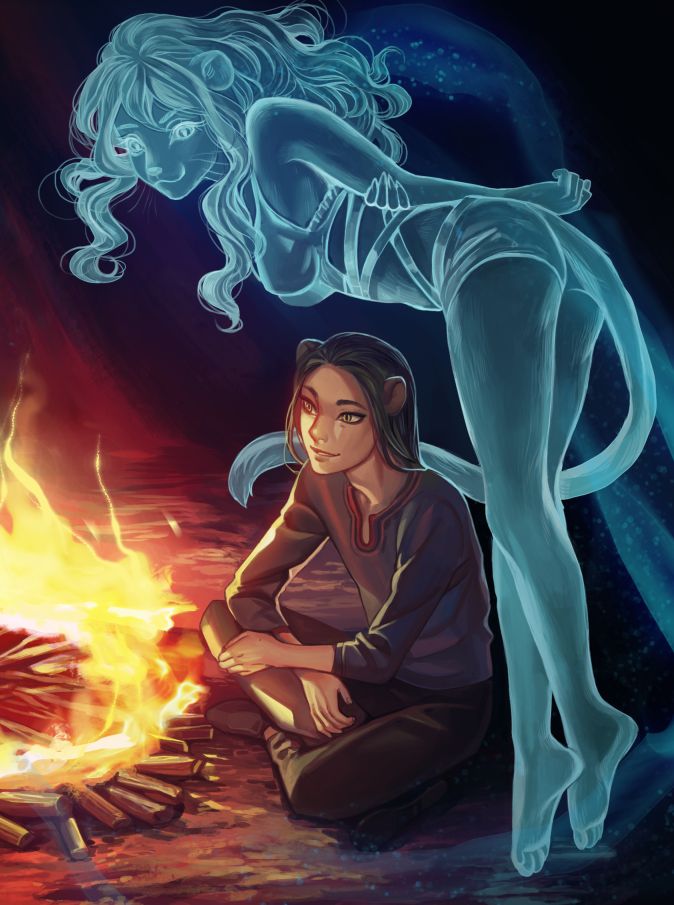Question Antagonist-Protagonist Story Structures
- Mister D
-
 Topic Author
Topic Author
No one is the bad guy in their own internal narrative, and i think that this is part of what makes villain character's more "interesting" from a psychological pov.
How they deal with the cognitive dissonance between their thoughts and their actions creates a more challenging narrative, both from an author's perspective, and from the audiences.
There are some great examples from the character's in the WU.
I am also reminded of Pratchett's Feegle's, when they aren't fighting with anyone else will fight with each other, or when they're alone, they'll try to kick themselves in the head just to stay in practise...
What other story structures have the author's here experimented with?
I'm asking because i'm working on something for next week, and exploring different approaches towards narrative and storytelling.
Measure Twice
- null0trooper
-

Mister D wrote: The Hegelian model uses a Thesis/Anti-Thesis/Synthesis story structure, that carries over to the narratives that underpin some of the base psychological structures of our personalities.
Carving away a character's agency until the protagonist's (and reader's) shadow can be projected onto it like a movie screen may fit that model exactly, but one thing the postmodernists may have gotten right is that it doesn't work as intended. The author only gets to pose their two (or more) theses and set them in tension against each other within an encompassing set of cultural ideologies that gives them meaning. The synthesis occurs in the reading of the text, and relies on the author convincing the reader that the theses posed are plausibly true.
Thus, short pieces lend themselves to Black vs. White contrasts, for brevity, but rely more heavily on the cultural context to fill in the gaps. Longer pieces typically need to recognize the white within Black and the black within White.
"Man vs. Self/Inner world" and "Man vs. (Outer) World" can be seen as subthemes of Protagonist vs. Antagonist, without requiring an explicit character to be the "villain".
No one is the bad guy in their own internal narrative.
Said someone who's never read the Bible or Shakespeare, dealt with clinical depression, or had a narcissist enter their life.
See how terse, truthy statements might lead one astray?
What other story structures have the author's here experimented with?
Bek's "Razzle Dazzle" (Parts 1 , 2 , and 3 ) might be considered to follow a hakawati style of storytelling.
Forum-posted ideas are freely adoptable.
WhatIF Stories: Buy the Book
Discussion Thread
- Mister D
-
 Topic Author
Topic Author
null0trooper wrote:
Mister D wrote: The Hegelian model uses a Thesis/Anti-Thesis/Synthesis story structure, that carries over to the narratives that underpin some of the base psychological structures of our personalities.
Carving away a character's agency until the protagonist's (and reader's) shadow can be projected onto it like a movie screen may fit that model exactly, but one thing the postmodernists may have gotten right is that it doesn't work as intended. The author only gets to pose their two (or more) theses and set them in tension against each other within an encompassing set of cultural ideologies that gives them meaning. The synthesis occurs in the reading of the text, and relies on the author convincing the reader that the theses posed are plausibly true.
Thus, short pieces lend themselves to Black vs. White contrasts, for brevity, but rely more heavily on the cultural context to fill in the gaps. Longer pieces typically need to recognize the white within Black and the black within White.
Chewy.
There was one of Bach's piece's that was created as a duet, but only had a single instrument part written down. Structurally it was a musical conversation between two instruments, but as only one instrument was played, it was like hearing a single side of a telephone conversation, and the audience having to hear the other side of the conversation inside their own heads.
Talking of brevity and context in language, have you read Herbert's "Dosadi Experiment"?
Similar context-dependency of communication leading to terser communication, but also to more subtleties/sub-textual communications.
Saying more with fewer words.
"Man vs. Self/Inner world" and "Man vs. (Outer) World" can be seen as subthemes of Protagonist vs. Antagonist, without requiring an explicit character to be the "villain".
I slap my forehead thrice.
I forgot about the Hero vs. World narratives.
No one is the bad guy in their own internal narrative.
Said someone who's never read the Bible or Shakespeare, dealt with clinical depression, or had a narcissist enter their life.
See how terse, truthy statements might lead one astray?
Sidenote: I have read different translations of The Bible, and a lot of Shakespeare.
I have, also, worked with clinically-depressed alcoholics, and clinically-diagnosed narcissists, though i have never suffered from those conditions. I'll just stick with my ADHD.
I do get your point about truthiness.
I wasn't trying to be glib, but i can see how that may have come across.
Necessary feedback. Thank you.
It was more aimed at describing the damage caused by the cognitive dissonance that arises when the stories that you tell yourself about who you are, start to diverge from the actions that those stories lead you to take.
The Spanish Inquisitor who loves the heretic so much, that he's willing to risk his own personal damnation, in order to save the heretic's soul from hellfire, which is why he's putting the heretic on the woodpile, lighting the bonfire, and, then asking them to repent...
Or the British Empire that brought the light of civilisation to the rest of the planet, usually by going to other places, commiting genocide, enslaving the locals, and stealing everything that wasn't nailed down...
What other story structures have the author's here experimented with?
Bek's "Razzle Dazzle" (Parts 1 , 2 , and 3 ) might be considered to follow a hakawati style of storytelling.
I hadn't come across that description, but it fits the Nasruddin-ish approach towards interludes, sidetracks, and tangents, while telling stories by metaphor, parallel, and, analogy.
"Showtime!"
Measure Twice
- null0trooper
-

Mister D wrote: Talking of brevity and context in language, have you read Herbert's "Dosadi Experiment"?
Similar context-dependency of communication leading to terser communication, but also to more subtleties/sub-textual communications.
Saying more with fewer words.
It's been a long time since I read it. Maybe it's time to put it on the to-read list.
Mister D wrote: "Showtime!"
One or two of my characters use that same catchphrase. Apparently it means "Let the Innocent Bystanders beware!"
Forum-posted ideas are freely adoptable.
WhatIF Stories: Buy the Book
Discussion Thread

